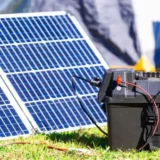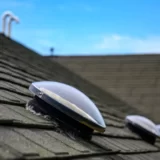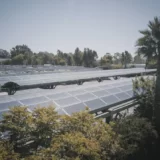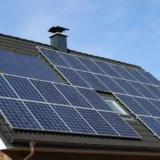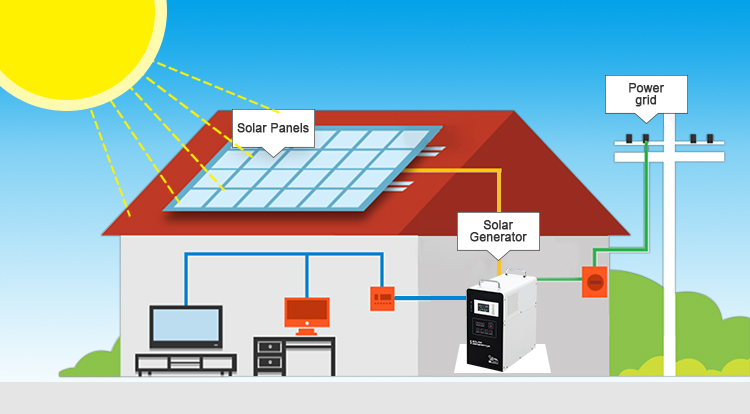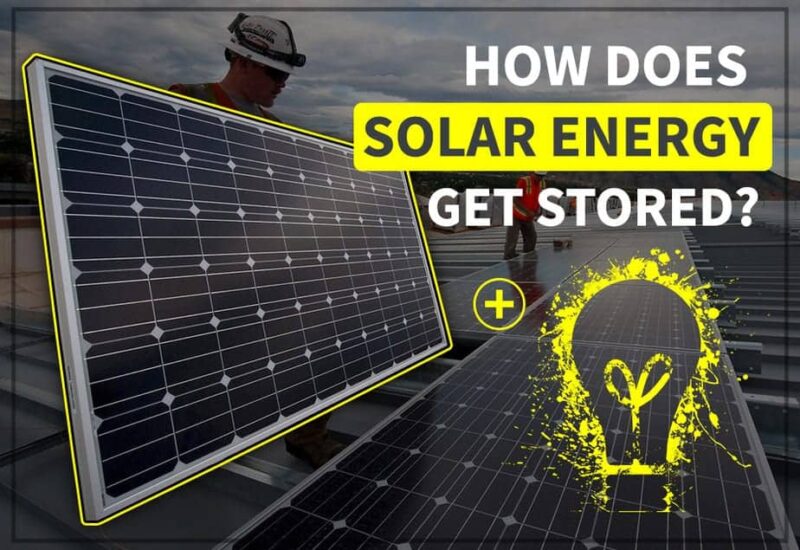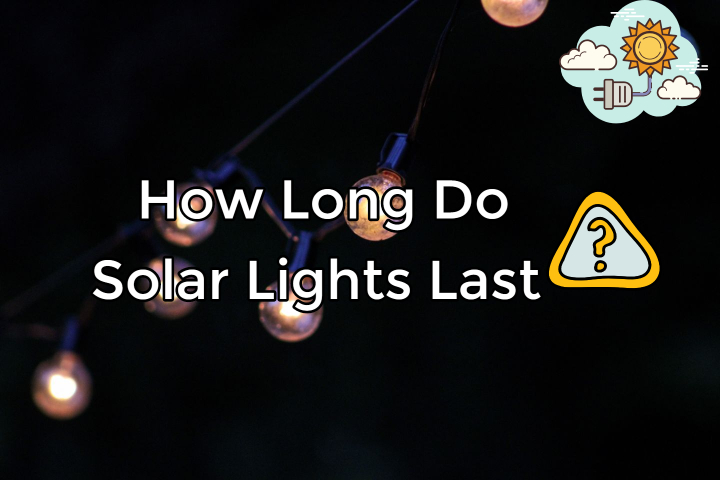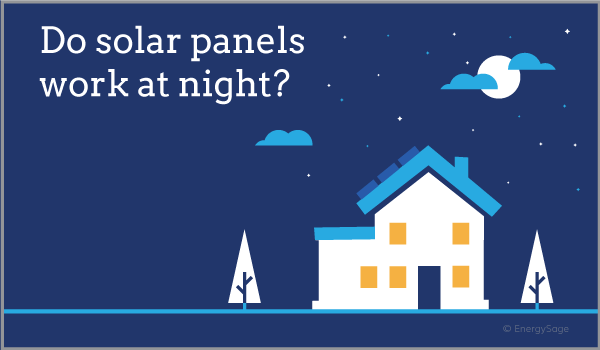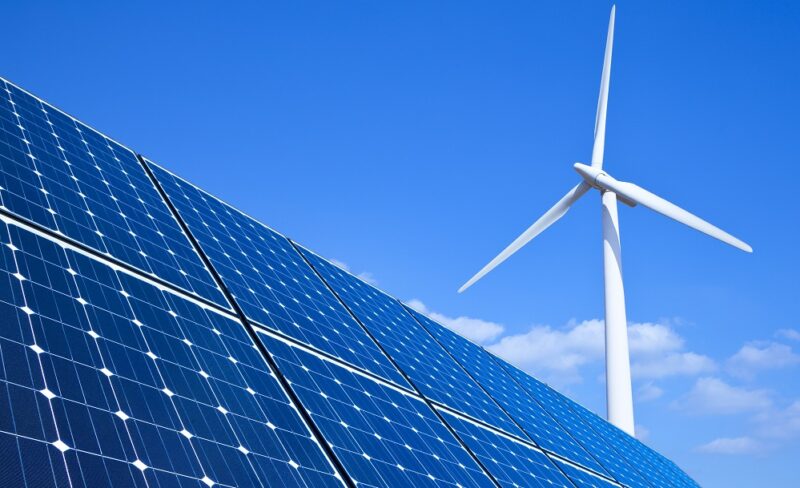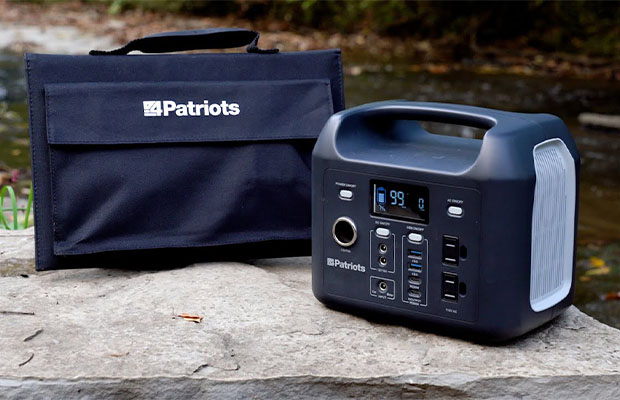The best solar panels for camping is that this method delivers green, clean, and renewable energy and you don’t have to pay for mains hookup! Additionally, because of their portability, you can bring them anywhere with you, including into the mountains for a wild camp.
Solar energy has become a popular choice for outdoor enthusiasts like campers, hikers, and off-grid explorers as an eco-friendly way to indulge in their favorite pastime. Although solar energy systems are popular among homeowners, solar energy can be used for more than just home appliances. Below are the top picks we choose from market:
- 1. Best Overall: Anker 625 Solar Panel
- 2. Most Stable: Jackery SolarSaga 60
- 3. Best Budget: Anker 515 Solar Panel
- 4. Best Crossover: GoSun SolarPanel 30
- 5. Best for Smartphones: BioLite SolarPanel 5+
- 6. Best for Chaining: Goal Zero Nomad 50
- 7. Best Pocket Solar Panel Charger: Renogy 10W Solar Battery Charger and Maintainer
- 8. Best Folding Panel: Renogy E.FLEX Portable Solar Panel Kit
- 9. Best Camping Power Station: Renogy PHOENIX Power Station
In this article, we’ll examine the top nine solar panels for camping using a thorough comparison of their technical attributes, prices, dependability, and other factors.
Table of Contents
Best Solar Panels for Camping: Complete Reviews
1. Best Overall: Anker 625 Solar Panel

Pros
- Strongest panel in my test, charged two devices simultaneously under very overcast skies
- Overpower protection
- Integrated sundial
Cons
- Expensive
- Less stable when set up than other panels in my test
The Anker 625 was still able to charge my phone 5 percent in only five minutes even during the cloudiest part of my testing day, when the sun was obscured by dark gray clouds and the other solar panels gave up. Then, under the same circumstances, it charged a 32,000 mAh battery pack by 5% in a half-hour. The battery pack continued charging when I plugged both it and the phone in at once. This solar panel option is what you’ve been searching for if there’s a chance of less-than-ideal weather during your camping trip.
The Anker 625 was also one of only two solar panels I tested that had an integrated sundial, which helped me position the panel as efficiently as possible. When it’s hard to tell the sun’s angle, this is useful. Kickstands proved to be less useful. Only two kickstands—one on each end—were provided, despite the four panels’ nearly five-foot width. As a result, the unit moved more in the slight breeze that occurred during testing than other configurations with higher kickstand to panel ratios.
2. Most Stable: Jackery SolarSaga 60

Pros
- Two panel array was both stable and easy to set up
- Great value
- Overpower protection
Cons
- Unable to power two devices in cloudy conditions
Camping solar panels must walk a fine line between being portable and stable enough to withstand the elements. The Jackery SolarSaga 60 impressed me the most during testing because it was so simple to set up and once it was, it didn’t move no matter how much wind there was or how much I bumped into it while fiddling with the other devices. (It must be shielded from rain, just like the other solar panels in this test.)
Once set up, the SolarSaga 60 did a great job powering my devices; even in cloudy conditions, it charged my smartphone to 5% in five minutes. But when plugged in during cloudy conditions, it struggled to power two devices, unlike the more expensive Anker 625.
The SolarSaga 60, which is made up of two panels and two kickstands, was the simplest large panel in my test to store; it folded up like a book with a magnet holding the edges together at the handle. It’s difficult to go wrong with this device if you need a high-power one that’s also straightforward to use.
3. Best Budget: Anker 515 Solar Panel
Pros
- Low price
- Three USB-A ports for charging
- Lightweight and low profile
- Snaps hold the panels together during storage
Cons
- Was unable to charge my phone in cloudy weather
- Only kickstand to fall over in the wind
While some campers set up their battery and solar panel arrangements before their tents, for others it is more of an afterthought or even a backup. If that describes you, the Anker 515 might offer just enough power to see you through the final day of camping at a much lower cost.
Because it wasn’t made primarily for power banks, the Anker 515 stands out from the competition. Therefore, it has three straightforward USB-A ports rather than a complicated DC port or cable that would be difficult to match, which can be used to power the majority of small electronics, including your smartphone, your partner’s smartphone, and one of the best camping fans for those hot summer nights. It cannot even charge my phone until the cloudy skies started to thin out because of its small size, which makes it dependent on direct sunlight to power devices.
4. Best Crossover: GoSun SolarPanel 30

Pros
- Lightweight enough to take backpacking
- Low profile for the wattage it provides
- Easy to use
Cons
- Struggled to provide power during cloudy weather
- No kickstands
- High price for its wattage output
The GoSun Solar Panel 30 may be the ideal choice if you’re looking for a solar panel that can deliver significant wattage for a backpacking trip (or that will take up almost no space in your car). It was one of the more streamlined panels in my test and one of the best solar panels for camping that folded down to well under an inch, despite the fact that it lacked a kickstand, which made it a little more difficult to adjust the angle when the sun was low on the horizon. This one could easily fit in a hiking backpack for a leisurely weekend getaway.
This panel was unable to charge my phone in the absence of direct sunlight, but it was able to fully charge it in five minutes after the clouds cleared enough for me to see my shadow on the ground.
5. Best for Smartphones: BioLite SolarPanel 5+

Pros
- 3200mAh internal battery
- Affordable
- Small and lightweight
- Integrated sundial and adjustable kickstand
Cons
- Slowest charging time of the solar panels I tested
- Performs poorly in even slightly cloudy weather
While camping, not everyone wants to charge a laptop or an electric cooler. Sometimes all you need to do is give your phone a little boost so you won’t have to keep track of the battery life as you travel.
In essence, the BioLite Solar Panel 5+ is a cheap substitute for a smaller battery pack. Its maximum output of only 5 watts is sufficient to charge a smartphone but not a larger battery pack because it is too low for that purpose. It also had an integrated sundial, which I used to position the solar panel most effectively during testing, and an adjustable kickstand, which was the only one of the solar panels I tested. Even though it was sunnier (though still quite cloudy) than other times of my test, the BioLite Solar 5+ took 22 minutes to charge my phone 5 percent. The BioLite’s best and highest use is to charge the onboard 3,200 mAh battery (which can also be charged before leaving home via a micro USB port), which will expedite your smartphone’s recharge so that you can get back to work. This is in contrast to other panels, which could be used to spot charge a device while you’re on the go.
6. Best for Chaining: Goal Zero Nomad 50

Pros
- Easy to chain
- Compact size for a four-panel array
Cons
- Struggled to charge my phone during cloudy weather
I’ll admit that it was simple to start overcharging once I started using my phone and power banks for camping. What couldn’t I only recharge using the sun’s energy? But you’ll need more than the typical 50 or 60 watts of most panels to truly capture all that energy (especially if you live, like me, in an area of the country that experiences frequent cloud cover). facilitating (enabling?) you to supercharge your solar powering capabilities, the The Goal Zero Nomad 50 was made with cords placed next to the port specifically for chaining multiple panels together.
Only after the weather began to clear and the PNW monocloud became more manageable did a single Nomad 50 charge my phone independently for 5% in just over five minutes. It struggled to supply any power at all when the clouds were darker.
The Nomad 50 was a four-panel display, but it folded down to about the size of a briefcase for travel and had a useful magnet to secure the packet. With this one, it’s simple to begin daydreaming about incorporating a few extra panels to produce a truly potent array.
7. Best Pocket Solar Panel Charger: Renogy 10W Solar Battery Charger and Maintainer
Pros
- Compact and lightweight enough for backpacking
- Dust-tight and waterproof
- Fast charging capability
- Competitive price point
Cons
- Not designed to power larger devices
- Full sun charge time may vary
- Some of the included cords may need to be replaced over time
All types of 12V batteries, including AGM, lithium, gel, and more, can be charged and maintained using the Renogy 10W Solar Battery Charger and Maintainer. With its three different connection options, this plug-and-play system makes it simple to charge external battery packs for your vehicle, motorcycle, RV, boat, or other device.
You won’t need to worry about freezing or overheating with such a wide range of operating temperatures. You can use this solar charger for all outdoor needs thanks to Renogy’s efficiency guarantee.
Customers laud the simplicity, quick charging speed, and overall power of this solar charger. This solar charger should be at the top of your list of camping equipment because it can be used for both backup power and camping.
Read More: Best Solar Panels For RV
8. Best Folding Panel: Renogy E.FLEX Portable Solar Panel Kit

Pros
- Lightweight and water-resistant design
- Can generate up to 30W of power
- Charges a smartphone or camera in two to four hours
- CE and ETL electrical safety certifications
Cons
- No battery, so it can only charge devices on a sunny day
- Only suitable for small devices
- Vulnerable to piercing and squashing, so must be handled with care
With the ability to unfold into a 30-watt power source, the Renogy E.FLEX Portable Solar Panel matches the high-efficiency performance of the best home solar panels by converting 22% to 25% of sunlight into electricity.
With this portable solar panel, you can recharge a tablet in four to six hours and a smartphone or action camera in two to four hours. Thanks to its three USB ports, it can simultaneously charge three devices.
The 25-year power production warranty and the five-year material and workmanship warranty are both included with this portable solar panel. When folded, it has a small footprint of 12 inches by 6 inches and only weighs 1.6 lbs.
9. Best Camping Power Station: Renogy PHOENIX Power Station
Pros
- Compatible with many types of devices — USB, 12V DC, 110V AC
- Recharges with wall power, car socket, or minimum 30W solar panel
- Includes a 17,500 mAh lithium-ion battery
- Compact, portable design
- CE and ETL electrical safety certifications
Cons
- Depends on an external solar panel or other power sources to recharge
- The charge is depleted in less than one hour when used at full 200W power
The Renogy PHOENIX Power Station can supply up to 200W to electronics and small appliances. The Power Station is compatible with a wide range of devices because of its numerous USB outputs, including three USB-A ports, one USB-C port, a CIG port, and 110V AC and 12-volt DC.
Two LED flashlights and a lithium-ion battery with a 17,500 mAh capacity are equipped with the Power Station. It measures approximately 7 by 6 by 5.6 inches and weighs 4.6 lbs in total. It can be charged using a solar panel, a wall outlet, or a car outlet. The device recharges in seven hours when used with a 50-watt solar panel.
Cost of Portable Solar Panels for Camping
Numerous variables, most notably wattage, affect how much solar panels for camping cost. For instance, you might be able to find pocket solar panels with an output of under 10W for under $40, but you should prepare to pay over $100 for a larger panel with an output of more than 30W. The cost of portable solar panels is influenced by characteristics like robustness and sunlight conversion effectiveness.
Additionally, larger systems are offered, and prices rise in line with that. For instance, the cost of a 1,500 watt power station with its own solar panels for recharging can be more than $2,000.00. This may seem pricey, but if you use RV solar panels for camping or need a dependable long-term setup, it may be well worth it.
Things to Consider before Buying a Solar Panel for Camping
Several important factors that you should take into account are listed below.
How Solar Panels Work
Solar cells, the most fundamental component of solar panels, are what turn sunlight into electricity. Each cell has two conductive layers, each sandwiched between two silicone layers, one of which has extra electrons and the other of which has space for them.
When sunlight strikes a solar panel, it sends a photon crashing into the solar cell, which then releases one of the extra electrons. This electron creates a positive charge on one side and a negative charge on the other when it moves over to one of the silicone layers with electron space. In order to store the energy that the electrons produce while moving, the solar cell controls how they move. Despite the tiny amount of energy that each solar cell can produce, when connected in a solar panel, it can be quite impressive, with some of the panels in my test being able to produce up to 100W.
When trying to capture this energy on the other side, whether it be in a power bank or directly into a device like some of the best solar generators, different solar panels are better at controlling this output of energy than others.
Even though it may appear that your phone is simply charging very quickly, there is a good chance that you will damage the battery if you attempt to charge it on a port that can only produce 20V of power. The USB ports in my test had a low voltage output (5V or less) due to the solar panels, but the DC ports, which are meant to work with one of the best power banks for camping, had a higher voltage output (14.5V to 26.5V).
The maximum voltage output of each solar panel port should be compared to the maximum voltage that the battery of your device or power bank can handle, even though this offers some protection against unintentionally overcharging your devices.
Power Output
There are variations in the power ratings of different solar panels, but generally speaking, a larger solar panel will produce more power. This is why solar panels for camping are typically folded twice or more—to maximize the surface area they can cover when in use and to minimize the space they take up while being transported.
Packed Size
Even though most people have plenty of space at camp to spread out a solar panel unit, the same cannot always be said of the vehicle you use to get there. Consider a smaller solar panel if your space is constrained, the weather is reliable, and you have minimal power requirements.
External Battery
A lot of the top camping power banks are compatible with the best solar panels. This is because the majority of solar panels lack a means of storing the electricity they produce when the sun is shining for periods when it is overcast or only lightly clouded.
Additionally, it’s crucial to make sure your solar panel has a port that corresponds to the high voltage output port of your power bank because the USB ports on the majority of camping solar panels limit the voltage output in order to prevent unintentional damage to the battery of smaller electronics.
Chaining Solar Panels
Some campers may choose to chain together multiple solar panels into a single array in order to increase the amount of energy stored in a battery pack during the hottest part of the day.
Also Read: Can Solar Panels Power a Whole House?
Final Thoughts on Best Camping Solar Panels
You can power up and recharge crucial devices in the great outdoors without access to conventional power by using the best solar panel for camping. A great power solution, solar power generates energy that is clean, green, and renewable.
The best camping solar panels must meet a few requirements:portability, efficiency, and durability. Here are all the wise decisions we suggest.
- 1. Best Overall: Anker 625 Solar Panel
- 2. Most Stable: Jackery SolarSaga 60
- 3. Best Budget: Anker 515 Solar Panel
- 4. Best Crossover: GoSun SolarPanel 30
- 5. Best for Smartphones: BioLite SolarPanel 5+
The Anker 515 or the BioLite 5+ will both deliver enough juice for a smartphone at a reasonable price (and slower speed). Renogy E.FLEX Portable Solar Panel Kit is a good option if you’re looking for a good folding panel because of its light weight and water-resistant construction.
You May Also Like: Best Roof for Solar Panels
FAQs
What Size Solar Panel is Good for Camping?
What you want to use the solar panel for will determine what size solar panel is best for camping. A smaller single panel (with an auxiliary battery) is all you’ll need to get started if you’re looking to charge a smartphone. A triple or quadruple panel setup (or even an array chained together) will work better if you want to charge multiple appliances or devices.
What Type of Solar Panel is Best for Camping?
Monocrystalline solar panels have the highest efficiency ratings in the industry and can convert more than 20% of sunlight into usable electricity.
Can a Solar Panel Overcharge a Battery?
Even if it initially appears that your phone is simply charging very quickly, there is a good chance that you will damage the battery if you attempt to charge it on a port that can output 20V of power. The USB ports in my test had a low voltage output (5V or less) due to the solar panels, whereas the DC ports, which are designed to work with a battery pack, had a higher voltage output (14.5V to 26.5V).
While this offers some protection against unintentionally overcharging your devices, it’s still important to understand how the maximum voltage output of each solar panel port compares to the capacity of the battery in your gadget or power bank.


